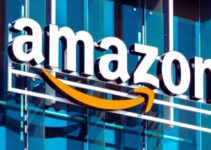Netflix is the world’s leading online paid video streaming platform. Marc Randolph and Reed Hastings established the online video streaming platform Netflix in 1997. Today, we’ll discuss the value chain analysis of Netflix; and the primary and supporting activities involved in the process of value chain analysis. They’re inbound and outbound logistics, operations, marketing, and services; infrastructure, HRM, technological development, and procurement of the video streaming platform as an application of value chain analysis.
Substitutes of Netflix
- Disney Plus
- Vue
- Sling TV
- YouTube
- HBO
- Play Station
- HBO Go
- Sony Crackle
- Apple TV
- Hulu
The value chain analysis of Netflix would analyze the primary and supporting activities in the process of value chain analysis. They’re inbound and outbound logistics, operations, marketing, and services; infrastructure, HRM, technology, and procurement. Here’s Netflix value chain analysis company example as follows;
Value Chain Analysis of Netflix
Let’s discuss the primary and supporting activities involved in the process of value chain analysis of Netflix. It is an application of value chain analysis based on Porter’s model; some of the key elements and components of value chain analysis are as follows;
Primary Activities of Netflix
Some of the five main primary activities in the value chain analysis of Netflix as a corporate value chain analysis example are as follows;
Inbound Logistics of Netflix
I-Alliance with Production Houses
The inbound logistics outlines how the company sources material for the production of goods and services. Since Netflix is an online video streaming platform its inbound logistical activities comprise establishing partnerships and alliances with various media production houses.
However, media houses like Warner Bros and 21st Century Fox Presentation produce different types of content for different platforms. If Netflix has strong partnerships with media production houses, then it would give the company a unique competitive edge by offering access to the latest content.
If a particular TV or Movie content is not available on any platform or it is premiering on Netflix for the first time. That’s how Netflix offers access to the unseen TV shows and Movies on its platform to customers. As a result, the video streaming platform creates value by partnering up with media houses.
II-In-house Production
Along with video content from the external media production houses, Netflix also has in-house production that produces content like TV Series, Shows, and Movies. The in-house production is beneficial to the company in producing original content in multiple languages. However, the cost of in-house production content is very low and the company doesn’t have to worry about copyright restrictions.
Outbound Logistics of Netflix
I-Website & Online Application
For a video streaming platform, the website and application are the outbound logistics of Netflix, where the customers can access the content. The platform has developed applications both for Apple and Android users, and the company delivers its content to customers through them. However, the cloud-based platform also has outbound logistics, and it offers speedy and quick streaming services.
- Distributing content to customers through downloading
- Showing content relevant to their interest
- Processing
- Product delivery
- Content storage
II-Rental DVD
In the early 2000s, Netflix used to run the rental DVD business. The outbound logistical activities of Netflix comprise delivering DVDs to the customers and making sure they return. Nowadays, the company publishes all of its content online on the server and cloud platform, where customers can watch it.
Operations of Netflix
I-Own Server
The operations of Netflix help the company to improve efficiency and productivity. The key to the operations of Netflix is its video streaming platform, and all the operational processes go behind the screen. However, they’re like content selection, running the content periodically, ensuring its functionality, and analyzing copyright issues. The platform publishes all of its content on the server, and the customers can see it online.
II-Cloud Based
Along with the server, Netflix also employs cloud technology and an architect for hosting the content. It allows the company to connect with all the users and customers on different devices. The other feature of the company’s network is that the company offers the best services to the customers. However, it comprises of following;
- Organizing content into a list
- Searching
- Showing relevant content
Marketing & Sale of Netflix
I-Promotion & Advertisement
According to an estimate, Netflix invested roundabout 2.545 billion USD in marketing in 2021. It comprises launching advertisements and promotional campaigns to attract the attention of customers. The promotional campaigns help the platform to attract a significant number of customers.
II-Transparent Marketing Campaign
The thing about Netflix’s marketing campaign is that it is open and transparent to the customers. That’s what customers love about the company and it played a key role in its success. However, the platform doesn’t make any false claims about its services.
Service of Netflix
I-Customer Care Center
The business model of Netflix outlines that the customers have to pay first to watch the content on the platform. Satisfying the needs and demands plays a key role in the service of the platform, and the company offers the best services after-sale. However, the customer care center responds to the complaints of customers 24 hours a day and 7 days a week.
- Real-time assistance relevant to their profile
- Multiple language options
- 24/7 service
Supporting Activities of Netflix
Some of the four main supporting activities in the value chain analysis of Netflix as a corporate value chain analysis example are as follows;
Infrastructure of Netflix
The infrastructure of Netflix plays a key role in the growth and success of the platform. It has a very effective management and data security system to deal with all types of cyber threats. Well developed infrastructure of Netflix makes sure that the company keeps running its operations effectively and smoothly. However, the company’s infrastructure facilitates the following;
- Corporate Level – planning, accounting services, and finance
- Business Unit Level – legal services, quality management, and general management
Human Resource Management
Netflix has a very large database of employees and the platform takes the ideas and input in the decision-making process. The HR unit of the company doesn’t have strict rules and regulations for its employees; offers rewards and incentives for their performance; and maintains a healthy workplace environment.
Technological Development
Netflix employs the latest technology to offer the best and updated streaming services to the customers, and it plays a key role in the company. The platform invests a significant amount of capital resources and time in tech research and development to improve the customer satisfaction level. In order to stand out from the competition, the platform should have the updated system and latest technology and it helps the company to gain a competitive edge.
Procurement
Netflix procures copyright license video content from external media houses to satisfy the needs of customers. The platform has been very efficient and successful in its video content procuring process. Netflix also has a very successful in-house production, and it contributes significantly to the profitability of the company.
Conclusion: Netflix Vale Chain Analysis Example Company | Application of Value Chain Analysis Process
After an in-depth study of the value chain analysis of Netflix; we have realized that Netflix is the world’s leading video streaming platform. If you are learning about Netflix value chain analysis company example; then you should keep in mind the abovementioned primary and supporting activities involved in the process of value chain analysis. They’re inbound and outbound logistics, operations, marketing, and services; infrastructure, procurement, HRM, and technology as an application of value chain analysis.
Ahsan is an accomplished researcher and has a deep insight in worldly life affairs. He goes Live 3 days a week on various social media platforms. Other than research writing, he’s a very interesting person.


